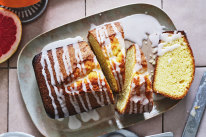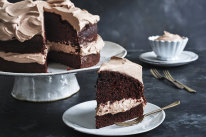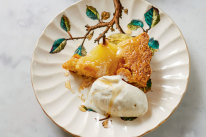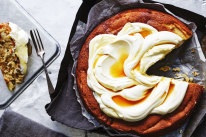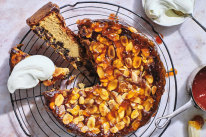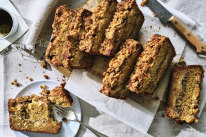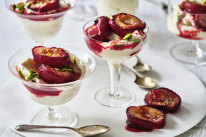Scandinavian baking project: Runeberg cakes with Biscoff, almond, orange and cardamom
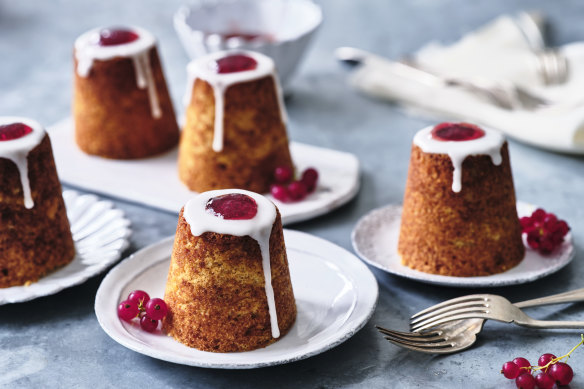
These delightful cakes are sold at the start of every year in Finland to commemorate the February 5 birthday of the country’s national poet, Johan Ludvig Runeberg.
Cardamom, so beloved in Scandinavian baking, can be polarising; cinnamon and ground ginger are both good substitutes. I hope you’ll give the customary cardamom a go, though; the ground almonds and orange go so well with it.
These little cakes are traditionally made in tall, cylindrical moulds not easily found outside of Finland, so I’m using small dariole moulds with half-cup (125ml) capacity, but muffin tins will also work. Just add a few minutes to the baking time.
Ingredients
FOR THE MOULDS
10g unsalted butter, softened
30g hard, spiced biscuits, such as Gingernuts or Lotus Biscoff, finely crushed
FOR THE CAKE
125g self-raising flour
¼ tsp salt
60g ground almonds
125g unsalted butter, at room temperature
125g light brown sugar
1 tsp ground cardamom (from about 12 pods)
finely grated zest of 1 orange
2 large eggs, at room temperature
1 tsp vanilla
50ml milk
2 tbsp rum or Amaretto (optional)
TO FINISH
30g redcurrant (or other red) jam
75g icing sugar
2½ tsp milk
Method
Step 1
Prepare the dariole moulds by brushing the base and sides liberally with the softened butter. Then, one at a time, fill the moulds with the biscuit crumbs. Rotate the mould so the crumbs adhere to the buttered base and sides, then pour the excess crumbs into the next mould. Repeat the process of coating the mould with the biscuit crumbs, continuing until all the moulds are done, then place them on a baking tray lined with baking paper.
Step 2
Preheat the oven to 170C fan-forced (190C conventional). Sift the flour and salt into a medium bowl, stir in the ground almonds, then set aside.
Step 3
Combine the butter, sugar, cardamom and orange zest in the bowl of an electric mixer and beat with the paddle attachment on medium-high speed until light and creamy (about 2-3 minutes). Add the eggs one at a time, followed by the vanilla, and beat well to incorporate. Scrape the bottom and sides of the bowl regularly with a flexible spatula to ensure even mixing. The mixture will look curdled at this stage, but don’t worry, it will come together in the next stage.
Step 4
Add about one third of the sifted dry ingredients to the bowl, followed by half the milk, then mix on low speed for just a few seconds. Add another third of the dry ingredients, followed by the rest of the milk and mix again for just a few seconds. Finally, add the remaining dry ingredients and mix just until it comes together. Using a flexible spatula, scrape the bowl to make sure the batter is smooth and evenly mixed.
Step 5
Spoon the batter into the moulds until they’re three-quarters full; about 70g of batter per mould. Place the baking tray with the moulds in the oven and bake for 20-22 minutes or until a skewer inserted into the middle of the cake comes out clean. Place on a cake rack for a few minutes and when they’re just cool enough to handle, turn the cakes out of the moulds onto the lined baking tray. Slice the central peak or dome off the cakes so that when inverted, they will sit on a flat base. If using the alcohol, dab the rum or Amaretto onto the upturned bases and allow it to be absorbed.
Step 6
Meanwhile, prepare the jam and icing for decorating the cakes. Warm the jam in a small pan over low heat (or in the microwave) for a few seconds, then stir until smooth. Set aside to cool slightly. Make the icing by combining the icing sugar and milk in a small bowl and stir until the mixture is a smooth and fairly stiff paste. Scrape the icing into a small piping (or ziplock) bag, then use scissors to snip off the tip (or corner of the ziplock bag) so there’s a 1cm hole for piping.
Step 7
When the cakes are no longer warm, pipe a thin circle of the white icing around the top rim of each cake, place a dollop of the red jam in the centre, and serve.
Continue this edition
The February 3 EditionUp next
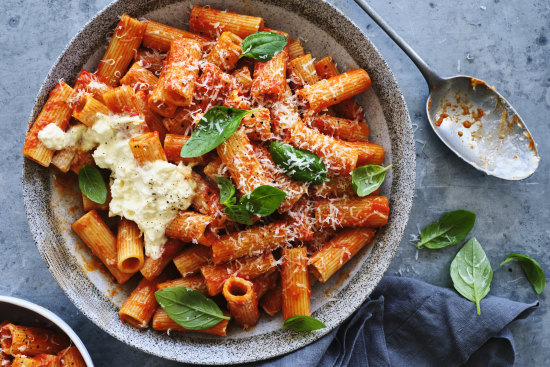
Karen Martini’s one-tray roasted tomato, red capsicum and chilli sauce for pasta
Roasting enhances and deepens the flavour, which you can’t replicate by cooking the ingredients in a pot.

DJs, fish finger buns, Vegemite toast: This new spot is not your typical two-hat restaurant
It looks half-finished, but King Clarence is every bit the sharp operation we’ve come to expect from the Bentley team.
Previous

Sriracha v Tabasco: What your go-to sauce bottle says about you
How much of the connection we feel to various food products and dispensers is testament to the ingenuity of its design?
The best recipes from Australia's leading chefs straight to your inbox.
Sign up- More:
- Baking
- Nuts
- Cream & milk
- Eggs
- Scandinavian
- Cake
- Cupcakes & muffins
- Dessert
- Dinner party
- Morning & afternoon tea
- Recipes


